Welcome, I’m Nicole Perna, the Director of the J. F. Crow Institute for the Study of Evolution and it’s my sincere pleasure to introduce today’s speaker, David Lovelace from the UW Madison Geology-Museum. David is a research scientist at the museum, but he’s also involved with a lot of outreach activities there and for the Crow Institute, in general. I’m going to tell you a little anecdote about an activity I did with David this past June because it’ll give you some sense of where he’s coming from. So, in late May, we got an email from a middle school teacher from Sun Prairie asking us if we could put together a panel of four evolutionary biologists to spend an entire day with the middle school biology classes, helping to give them some feedback and evaluate a project they’d done where the assignment was to design a prehistoric park. So, I said, “Sure. Why not?” Because we hate to turn away anybody that comes to us asking for STEM education. Lo and behold, we agreed and then I hit send on the email, and I thought, “Well, where am I going to find “four people with about one week notice?” So, I looked around, I started quite literally at home, signed up my husband and figured I could apologize for that later. Then I looked around my lab and I signed up my post-doc. And then I said, “Well, three evolutionary geneticists “is not a real good representation of the whole breadth “of evolutionary biology. “We really need somebody who knows something “about fossils.” So I wrote to the geology museum and they passed the invitation along to David and, within hours, he had agreed to do this as well, with really no more information than what I’ve given you.
Flash forward a week and we show up at the school, and it turns out we are literally going to listen to five hours’ worth of presentations from five different classes, each of which has been tasked to take five transitional fossils, assume they have DNA from it, bring them back to life and design a theme park. And the students spent several weeks and came up with these very elaborate plans. So they had a team dedicated to the research, a team dedicated to business and marketing, a team dedicated to educational outreach, for each of the five classes. And then a team dedicated to building these enormous, three-dimensional models. We walked in and there were about five of these large six-by-six models complete with hotels and enclosures and this, that and the other thing. Each class gave a presentation and this panel, which I would have found intimidating if I was in middle school, sat there and asked them a bunch of questions. So the geneticists, we asked kind of predictable questions, things like, “What have you done to ensure the safety “of the animals? Veterinary care and welfare “of the park-goers?” And they had good answers to all that. My husband Jeremy contributed this important question, “Why do soft pretzels cost so much “at the concession stand?” (audience laughs) But David had the real meat of it and I really admired the way he very gently brought the students around to question their own design in important areas, such as “Well, you chose an animal that’s very small “to be the surrogate for this DNA “but the animal you’re trying to grow “is really, very large.” He would bring them around to that realization on their own. Along with that, one very important, maybe even the enduring lesson from the whole thing, is not all fossils are dinosaurs. (audience laughs) And so, today David will talk to us about some actual dinosaurs with his talk Shaking the Dinosaur Family Tree: a New Look at an Old Story.
(applause)
– All right, so how’s everybody doing today? Awesome, so what I want to talk about centers on a paper that came out earlier this Spring by Baron and two colleagues. It kind of revolutionized the phylogeny of dinosaurs and how we think about them. What I want to do is kind of go through, first of all, the history of dinosaurs. Where’d they come from, what are they? And kind of walk through that, talk about the different clades, what we know about them a little bit, and then work into this new hypothesis that’s been generated. Within the vertebrate paleontological community, it’s definitely shaken things up. And so, I don’t know, you may have caught it through published in Nature and there was quite a bit of hub-bub around it this Spring, maybe it’s quieted down everywhere else except my small community of vertebrate paleontologists, but we find it intriguing, so we’re going to talk about that. The story really begins in the mid-1800s and Richard Owen was the person who coined the term dinosaur. So, in 1841 he’s the first person to really coin it, diagnose what a dinosaur was and from that point, you know this is early in the history of vertebrate paleontology, and there are very few specimens; all of two at this point.
Shortly thereafter, in 1869, so a decade after Origins, Huxley, Darwin’s bulldog, Thomas Huxley came up with the idea to unite several of the major fossils that had been found. He was trying to understand their evolutionary relationship. He basically grouped together everything that had been known so it was kind of theropods and Ornithischians, and we’ll talk about those. He coined a term to basically describe or characterize that clade, the Ornithiscelida. At that point, that’s what all dinosaurs were, basically Ornithiscelidans. That’s where it ended for a while until Seeley came along and, in 1888, he started looking at these fossils. At this point, remember, most of the fossils that had been collected were actually from the Jurassic or Cretaceous. They’re relatively derived. Origins of dinosaurs runs back around 220 million years probably for the common ancestor, which of course we don’t have, but once you get into the base of the family tree right around 235-230 million years ago.
So most of these fossils were almost a full 100 million years younger, relatively derived and they had noticed some characteristics. Seeley was the person who pointed out that there are two major clusterings, two major groups. So, any time that you’ve had probably dinosaur lectures and people talking to you about dinosaurs, we talk about the Saurischia and the Ornithischia. So the Saurischia, here, these are the sauropods, these are the long neck, long tail, super big ones. You know, 12 tons to 60-ton critters. And then the theropods, of course, the big meat-eating and small meat-eating dinosaurs that ultimately lead to the rise of birds. That’s the Saurischians and they are characterized by their hips. Both of these groups are simply diagnosed by their hip structure. Specifically, of the three hip bones, the ischia faces backwards and the pubis faces forward.
So it’s an anterior-facing pubis. Whereas, the Ornithischians, and so these are animals, the Thyreophora, things like stegosaurus, or the armored dinosaurs, Ankylosaurs, and then Cerapoda, things like Hadrosaurs and Triceratops and Ceratopsians. They are faced with a different hip structure where their pubis and their ischium face posteriorly. That is the condition in birds, hence the name ornith-ischian, it’s ischium like a bird. But, the bird-hip dinosaurs, as far as we’ve known for over 140 years, did not give rise to birds. They are derived from the lizard-hipped dinosaurs, the Saurischia. So there’s been this kind of dichotomous structure, Saurischian and Ornithischian, birds arrived from the one that’s not named for birds. This has always been an issue trying to figure out. Basically we think they secondarily retroverted the pubis.
No big deal, right? It’s a bird, so it’s flexible character. So we had this 100 years of evolution. In 1870, old Waterhouse Hawkins here, he’s in the crystal palace, they’ve these fantastic sculptures. That was modern science in 1870. This is what Iguanodon looked like. Notice the tip of his nose, here, has a horn on it. There’s no horn there, that’s actually it’s thumb spike. So there’s a lot of information that they didn’t know. And this happens today, dinosaurs that we describe and mount today, twenty years from now somebody’s going to be looking at it, laugh at us and say, “Oh my gosh, how did they “even possibly think this?” That’s science, right? This is the evolution of our knowledge and Iguanodon now is seen as most dinosaurs, as much more active, not this lumbering colossal giant, as much as this graceful duck-billed dinosaur.
So when did this happen? What gave rise to this major shift 100 years later? It really rises from this, the work of Bob Bakker and some of his Yale colleagues in the 1960s and 70s, they basically turned over what they coined “the dinosaur doldrums.” Pretty much, not a lot happened during this. You know, evolutionary biologists were busy with that whole new synthesis thing. I mean, there is a lot of stuff going on, so dinosaurs kind of got pushed to the side. And once they came up with some of the new specimens, specifically Deinonychus, which is this little theropod, meat-eating, has a sickled claw, looks like velociraptor, Bob Bakker was working on that saying, “You know, this thing looks. I mean, it’s a bird. “Come on, look at this thing, it is a bird.” Which goes back to Huxley in 1870, where he’s saying, “Look, birds probably arose “from dinosaurs, they look really, really similar.” But then that idea dropped off for a long time. So this reinvigoration of the idea that they’re warm-blooded, and key to this is that dinosaurs, Ornithischians and Saurischians shared a common ancestor. Prior to this, for the last 100 years, they did not believe that they shared a common ancestor, that these were not a monophyletic group, as we would think of them today. And they hypothesized that these animals, specifically the theropods, gave rise to birds. So it was kind of revolutionary.
It transformed the science of vertebrate paleontology. Basically this is where we stood, this was our understanding of the dinosaur family tree. You had these major clades, they’re monophyletic. This is our knowledge, this is the state of dinosaurs. This is not all of the dinosaurs we know, but each one of these lines that you can’t see in there is a genera and kind of a silhouette outline trying to show what they are. That’s the major tree. We have, over on this side, these round blobs are things like Stegosaurs, right here. Hadrosaurs, Ceratopsians. And then we get the theropod line, and the sauropod line.
And what we’re really going to try to focus on for much of this talk, I’ll explain the groups here, but we’re going to be looking at the base of the dinosaur family tree. We’re going to be looking at the trunk down there. To start with, down at the base, we need to first figure out where did dinosaurs come from. What are they related to? So, Archosaurs, is the major clade that we’re talking about and all of those animals include the Crocodylians, the Crurotarsans and the Crocodylomorphs as a crown of that clade. You have Pterosaurs, so the winged reptiles, the flying reptiles. You have Proto-Dinosaurs, the Dinosauromorphs and then, true Dinosauria. We’re going to be focusing on this part of the tree. But, to start off with, what are Archosaurs and how are they differentiated from the other animals? The big thing here is that, at this point in the evolution of this group, they go from this sprawling gate of all other reptiles at the time, they go to a semi-erect posture, they bring their legs down under them, they narrow their body plan, they elongate it. A lot of this seems to be in response to an increase in metabolism.
They’re moving a little bit faster, they’re doing more, they’re more active. That increase in metabolic heat requires them to narrow their body to reduce their profile effectively, to shed heat, not absorb so much heat. So they’re changing at this point in time, they’re starting to evolve into this kind of warm-blooded. They interlock their gastralia so they can breathe with their ribs. The Crurotarsi, these are the Crocodylians, and then we have an extinct group, Phytosaurs, which are very similar ecologically, set at the base of the Crurotarsi and Crocodylians at the crown. Scleromochlus, this is kind of cool, so notice so far, everything that we talk about at the base of the dinosaur family tree is about this big. So when we think dinosaurs, most people think pretty big. Right? Sauropods, large theropods. Most of the small stuff, down at the base of the tree, are very small.
Scleromochlus is probably the ancestor of Pterosaurs, which are a group within Ornithodirans. These are the flying reptiles and they have very small ancestors, a lot of the first ones are very small. They’ll also then get up to be the size of Cessnas. So it worked for them. But, interestingly, most of these that had flight, certainly had flight capabilities, they were using those big, springy legs that we see in Scleromochlus, they had these huge things, they think they’re saltatorial, they were bouncing. They actually use that bounce to become airborne. So these large, huge things like Quetzalcoatlus are probably launching from the ground, not flapping their wings to get up into the air. So there’s some interesting characters that we’re looking at the base of the tree, they’re very long-legged, very long-armed and the earliest dinosaurs, whenever you look at their skeletal structure, look very similar to the slightly-more-derived true dinosaurs, except in the pelvis. One of the defining characteristics of dinosaurs, here you go, here’s the million dollar thing, when somebody says, “What’s a dinosaur?” You can say, “any animal that has a perforated acetabulum!” (audience laughs) If you have a hole in your hip, you’re a dinosaur.
Birds have a hole in their hip, so, right, they’re dinosaurs. Hey, cool. The typical mammal structure in many reptiles, the head of the femur is a ball, and it sits in the socket and that’s the hip joint, within dinosaurs, that perforated acetabulum, that hole, meant that the hook of the femur, the femoral head, would sit inside of it and the ilium would rest right on top of it. That was their motion. Now, one of the advantages of that is it locks the leg in to an anterior-posterior motion very well. It gives you a lot of structural stability whenever you go to being truly bipedal and you weigh a lot. The problem is that they can’t do the splits. Well, they can, but they can only do it once. (audience laughs) So there are some limitations to this. But there are some distinct advantages, and one of which is …
This is my favorite dance, you know, going to any grade school, doing outreach, talk about how reptiles breathe and doing the back and forth motion. Dinosaurs didn’t do that, so it’s not nearly so fun to pretend to be a dinosaur walking around, except you get to stomp, but you don’t get this awesome side motion. Part of that is the locking of the hips and the upright structure of the body. So what is a dinosaur? Just that it has this perforated acetabulum, and it has this hinged ankle joint, which differentiates it from the Crurotarsan condition where the ankle joint actually is mobile around the calcaneum, as opposed to the calcaneum being introduced into the ankle joint itself within Dinosauria. So, major groups. We’ve talked about Ornithischians and basically, we’ll look at the three major groups of dinosaurs. We have the Ornithischians, these are the classic view, these are the Ceratopsians here, these are the armored dinosaurs over here, like the Stegosaurs and Ankylosaurs, and then all the duck-billed dinosaurs on down. So Ornithischians, one of the things we’ll be looking at, at least in part, is really low down in the tree, is this critter Pisanosaurus. It’s a relatively incomplete skeleton, but it’s got enough material there, certainly in the cranium, to try to figure out where this animal goes.
But it’s this guy. This is one of the major ones that’s kind of messing with the tree. You can imagine, as you get down to the base of a tree, there’s a lot of problems trying to distinguish groups. That’s where all the trouble lies. We had no data for a long time, so it’s really easy. We have three very clear clades. However, whenever you get more and more information, especially at the base of the tree, it becomes not so clear. That’s one of the animals we’re going to look at. So here’s Pisanosaurus, one of the features of it is, a very similar group Kulindadromeus has been found with feathers, or at least dermal insulation, protofeather-like structures.
And it has a very Ornithischian-like beak, so there’s a lot of structures within the mandible that are considered basal ornithischian. Heterodontosaurus, one of the interesting things, the Heterodontosaur dentition, that means it has different dentition, so it actually has really sharp canines and incisors, grinding surface-like posterior teeth. Very unusual for archosaurs. Archosaurs have like one type of tooth, it’s sharp and that’s it. We’re starting to see diversification within the group in different diet and feeding habits. Eocursor, one of the new 2007, another new basal dinosaur, several dozen have been found within the last dozen years. Basically every year we get a new dinosaur coming out here. So Thyreophora, these are within that group, the Stegosaurs, the armored, the plated dinosaurs, we have the other armored dinosaurs, the Ankylosaurs. Again, these were much more derived and this is what Huxley was working with.
This is what he was describing initially. Same with the Ornithopods, right? It’s a very diverse group of crested dinosaurs, the duckbills. And then, lastly, within the Ornithischian, the famous Ceratopsians. So the Ceratopsians basically had a very similar body form, but they go completely wacky with their cranial ornamentation. Triceratops is actually one of the most boring of the Ceratopsians with just a mere three horns. I mean, they’re only like a meter long, the horn. But the other ones had like 13, 20 … They get awesome, but very derived, right. So, moving over from the Ornithischians as we know them, we’re going to jump into the Saurischians.
These, again, the Theropods here, which are the meat-eating dinosaurs, here we get up into the Tyrannosaurs. Then you get into really cool Edward Scissorhand-like Therizinosaurs and then up into the group, the Maniraptorans that lead to the evolution of birds. So here’s birds, the crown group of Therapoda. Again, classic Tyrannosaurs and small, little theropods, Coelophysis there. Meat-eating, bipedal, almost all meat-eating, there’s a few herbivores that throw things wacky. But, they have an avian-like breathing system and they’re pneumaticized all over their body, very interesting structures. Similarly, the sauropods also are hypothesized to have this avian-style breathing system, as well as large pneumatic structures; one of the reasons that these have been united for so long. So Saurischia, these really large, long-necked, long-tailed dinosaurs, Brachiosaurus, Brontosaurus, which actually, for most of my career, I’ve been say, “it’s not Brontosaurus, it’s “Apatosaurus, it’s a nomenclatural mess-up.” Yeah, it turns out that now all the phylogenies are showing that it actually is true, so we can reinvigorate Brontosaurus. (audience laughs) So, who knew? Now Herrerasaurus.
So we have Pisanosaurus, that little dude, as kind of messing around with the base of the tree, Herrerasaurus is the other one and it’s been messing with Saurischia for a long time now. Herrerasaurus is a basal dinosaur, for sure, but it jumps back and forth between theropod and sauropod. We can’t tell what it is. You look at one suite of characters and it’s totally theropod. You look at another suite and you’re like, “Yeah, that’s totally sauropod.” But it’s in the same animal, so people go, “Oh, it’s a chimera.” Then we find a complete, articulated skeleton and we’re like, “Oh, it’s not a chimera.” It has characters of both. So it’s somewhere really close to the tree. And that’s again why we’ve always supported the hypothesis that Saurischia is valid, that sauropods and theropods are closely related. So again, these large dinosaurs, they came from bipedal ancestors in the Jurassic, increase their size, they get quite big. We see some really cool niche partitioning going on with these critters, there’s all the dinosaurs, right? That’s the whirlwind tour of Dinosauria.
So, we know a lot about these critters now, especially as we get into the Cretaceous closer to the present. Feathers have been found. This is one of my favorite specimens now. That is a tail of a dinosaur in amber. You know, we vertebrate geeks are going, “Man, look, it’s a dinosaur tail!” And the rest of the world’s going, “Are those ants? That’s awesome!” There’s some really cool things that are in there and a dinosaur tail. But the best part is, you look at this and go, “Well yeah, that’s a feather.” It really is unambiguous. And the tail is very distinctly Dinosaurian. A) It’s really long, has really well-developed chevrons. I mean, it looks like a dinosaur.
Now we just need the rest of the animal preserved in amber and that’d be great. We also have behavioral traits that are preserved, or we infer from the fossil record. So not only do we have skeletons, we have nests, we have animals that are actually sitting on the nests. We have multiple specimens of this guy, this is an Oviraptor. Now, Oviraptor poorly named because Oviraptor means egg thief, but it’s not a thief, it’s actually a really, really good parent. These are sitting on the nests likely brooding and the wings, you can see, are always splayed out like this. They have very large wing feathers, but the feathers on the rest of their body appear to be pretty small based on specimens that have been preserved. So they’re using the insulation on their wings to protect their nest, whether their shading the nest or incubating, actually increasing the heat, whatever they’re doing, they’re modulating the temperature of the eggs and brooding. So we get behavioral traits we can start assigning to these within the phylogeny.
Egg structures are really cool, but not super useful because they all look the same and they look just like birds’. But they’re novel, they definitely are the only thing that has egg structures that look like this are avians and dinosaurs. And then we go into this little guy, Kulindadromeus, and notice these features up here? Right, those are feathers. Now, Kulindadromeus is a little Ornithischian, so it’s on the other line, not the bird line, but the Ornithischian. So we have this, we have feathers, here’s Kulindadromeus as artistic interpretation, the feathers running down the dorsal spine. I’ve been doing some ecological niche partitioning with Warren Porter in Zoology and one of the things that we’re finding is that insulating the back gives you a heck of a lot more thermal range to work with. It protects you from the sun, as well as insulates in colder climates. We find it a lot in dinosaurs, it seems to be a real feature, and we’re trying to figure out why. But, there it is, an Ornithischian with feathers.
Oh! Here we go, another one! We couldn’t believe this. Like, within the last five years, we keep finding all these Ornithischians with feathers. These are dermal-like structures up here on the tail and up along the neck. So now, if we start mapping this, and looking at where these characters are starting to show up in the dinosaur tree, we notice that the feathered dinosaurs– Oh, we had a lot of them from the theropod line– And we’re starting to get some at the base of the tree, and we’re getting Ornithischians with feathers showing up here and there, at least modified dermal structures. But we don’t have any from sauropods. Okay, that’s interesting. We’re mapping on two different parts of the tree. Maybe we just aren’t finding it. Of course, that’s certainly a possibility.
But if we look at other characters like pneumatic structures, right? These are animals that have an avian-like breathing system, and one of the things that we notice is that sauropods are extremely pneumatized in their bones. They have air sacs that are throughout their entire body. So whenever it looks like you have a meter-long cervical and you have 12 of them, that’s a really long neck. One of the ways that they get around having such a huge mass, think of the leverage on that thing at the base of neck, they pneumatize it, so the whole neck is very, very air filled which reduces mass. And the pneumatic structures in the bone also increase their respiratory capacity which assists whenever you’re a 60-ton animal and relatively warm blooded. It’s seen throughout the evolution of the sauropods. When we look at pro-sauropods, we see just the base of the cervicals, up near the thoracic cavity, some of the thoracic, or dorsal vertebra and the sacrum. Then that transitions into the more derived sauropods and the air sacs go through the entire animal. Similarly, theropods are doing the same thing.
There are pneumatic structures all through their axial column and even into some of their ribs. So that character, when we plot those, that really is one of the strong characters that unites this, it’s unique to sauropods and theropods. Things are mapping all over, what’s driving this? And, of course, cool things, right? Planets are really cool. And dinosaurs. So we got really envious when Pluto got all the attention for being kicked out of the solar system. So somebody had to come up with it and that’s where Baron et al decided, “Hey, let’s shake up the dinosaur family tree.” So they ran a series of analyses and they actually are pretty robust analyses, they looked at a very large swath of Dinosauria. So they had a very broad inclusion throughout the tree and focused, though, on including these all the new dinosaurs from the Triassic, from the beginning, the dawn of dinosaurs. So whenever they started including these dinosaurs, this is what led to shaking things up. But they ran into a major problem.
Back in the 60s and 70s when the vertebrate paleontologists are kind of having this dinosaur revolution, one of the things that came out is that we learned about this thing called cladistics. I don’t know, botanists had been using it a long time and they were kind of laughing at us, so we thought, “Well, hey, we ought to try this out,” and started applying cladistic analyses, coming up with phylogenic hypotheses, testing, these things. When you did that, we went from a field in vertebrate paleontology where were diagnosing these morphospecies, right? We don’t have the same ability to look at species as you do in the extant, so we’re just using morphologic characters of the bones, that’s all we had. This is a description, what is Crocodylia? Well, it has all of these characters. If you have all of those characters, you are probably a Crocodylian. But whenever you go to the field, we find a fossil, we look at the characters, you don’t want to list this every single time and say “this defines a crocodile.” So what is a crocodile? You still use all this information, but we’re using phylogenetic taxonomy, phylogenetic nomenclature. We’re taking all this data, putting it into cladistic analysis and anything within Crocodylia is then defined as the last common ancestor of these, Gavials, Alligators, and Crocodiles. So, Crocodylia is anything that includes these three animals, these critters. So, if you’re outside of that, you’re not a crocodile.
It was a very simple way to describe things. It simplifies the description and the diagnosis of the animal and how we discuss it. Any time new characters arise, it doesn’t mess with the tree. It didn’t do– It makes it easier for us, but it also adds some issues because, here we go, here’s Dinosauria. It has been defined for a long time now as all descendants of the most recent common ancestor of birds and Triceratops. So it’s the inclusion of anything that includes birds all the way to Triceratops. Anything in there is a dinosaur. Great, and it’s monophyletic. Great, it makes everybody happy.
Saurischia, same thing, it is anything that includes pigeons and Saltasaurus but excludes Triceratops. So Saurischian is a clade within Dinosauria and similarly Ornithischia is Triceratops but does not include pigeons or Saltasaurus. So that’s how we describe and define these major clades. However, when this paper came out, here’s what we had nice, monophyletic Dinosauria, Ornithischia, theropods and sauropodomorpha, these comprise the Saurischia. The problem was this new phylogenetic hypothesis basically shifted the base of the tree and it threw theropods out of their inclusion in Saurischia, or at least their tie to sauropods, and said that they were more closely related to Ornithischians. The problem is that created a paraphyletic group, which, in phylogenic nomenclature, they didn’t really like that much. So, enter Herrerasaurus. We had to redefine everything. The authors had to redefine everything and so they got rid of the definitions of Ornithischia and introduced Ornithoscelida and changed the definitions of Saurischia and Ornithopod.
So these are the new definitions of these animals, but that’s one of the things that their paper did. So now, all the things that we had been considering within the group, what happened effectively here is, without changing the definition, sauropods were no longer dinosaurs, and that would be weird because they would be excluded under the definition. So they had to change the definition. This is one of the things that’s causing the stir in the community. We’re trying to figure out– Everybody’s excited by it because it’s a new hypothesis and it’s completely different than we’ve had for 140 years, but it’s one paper. A lot of the articles, “Are we going to go change all the textbooks now? What’s going to happen?” No, it’s a hypothesis, but it’s really intriguing because it deals with some characters at the base of the tree and trying to figure this out. So effectively, what we have, we’re looking again, focusing down here, it’s this part of the tree. That’s all we’re looking at. So, it didn’t mess with any of the relationships up the tree, it’s just at the base.
But it started when it threw sauropods out of Dinosauria, it kind of caused some eyebrow raising. So, same thing, this is from the Baron et al paper. They’re looking especially in the early Jurassic through the Triassic with some inclusion of later, more derived taxa. They’re getting this unity of Ornithischians and Theropoda and a lot of it is based on skeletal structures in the hip and the leg. But these are all the characters that are really diversify or starting at the base of the clade. That’s the definition, right? A perforate acetabulum. So you’re down at the base, there’s a lot of stuff going on and what’s what is being discussed. Pisanosaurus, that little guy, is actually now, as of two weeks ago, is kicked out of dinosaurs and they think it’s a basal dinosauromorph. So keep posted on all of this because it’s not written in stone quite yet, but it’s really intriguing to talk about.
So this year, kind of bringing this home a little bit to Wisconsin and some of the stuff that we have been doing as of late, is looking at the Triassic rocks in the Western US. Now most of the rocks in the Western US have been thought to be older than, say the rocks of South America, and South Africa where the earliest dinosaurs are coming from. For the most part that’s been completely true. The recent work that I’ve been working on, Triassic outcrops in Wyoming, this is getting to be a really fun place to play because the rocks in Wyoming are notorious for not having fossils. And, of course, being a good paleontologist, I’m going to go look for fossils in the place everybody says there aren’t any. It turns out, if you look long enough, you find stuff. Either that or you trick yourself. We had some nice stunning scenery at least this year, we didn’t find much this year, but in the past four years we’ve found some exquisite sites. So this year we were up in the Gros Ventre Wilderness and looking at outcrops that nobody’s looked at before.
But you have to hike in quite a ways and it’s up in bear country so it was highly entertaining. I had to start running and prepare for that, because I had to make sure I could outrun the other members of my team. (audience laughs) We did find some really nice tracks this year and I’m going to point this out because this is kind of cool. When I saw this I’m like, “Oh man, that is a really cool theropod track! “That is beautiful.” But theropods, remember, they’re bipedal. They don’t use their arms. Their arms have been reduced pretty significantly at this point. But what we have right up in front, right here, that’s a manus imprint. Those are two little toes of the manus. We have trackways of these things.
So we have what appears to be a theropod footprint but with an Ornithischian body. Because all the Ornithischians at the time are quadrupedal. So it’s kind of interesting. Now we’re starting to find some new data. The other aspect of this– I’m a sedimentologist by training, so I really look at rocks more than anything else, but we’ve been dating these rocks and trying to get them dated and they are definitely older than any of the Triassic rocks in North America that have been previously looked at. So we’re finally opening up a window of time to look at these and test some of the hypotheses that have been generated by Baron et al. So we can go look at finding new dinosaurs. The goal of all of this is, “Hey, if we could find a new dinosaur in North America that’s equivalent to the age of the dinosaurs in, say, South America and South Africa, maybe we can start looking at the North American contribution to the rise of dinosaurs as well as try to strengthen or make that base of the tree a little bit more robust and test that.”
All of that being said, we went out to the field, we found these tracks this year, but a little over a year ago now, we found another specimen. Now, in the world of vertebrate paleontology, this is really exciting, this is a completely awesome dinosaur. (laughs) Yeah. (audience laughs) Right, that’s about right. We looked at this, and when we collected this material, at first it was like, well, we’ll collect it, it’s kind of cool dinosauromorph. But there are key features, and this was some of the features that were pointed out in the Baron et al paper. This is the proximal end of the femur. So this is the head of the femur and dinosaurs have a very distinct femoral head. We have a little, tiny dinosaur femur here. The head of it, this is the mid shaft showing where the fifth trochanter is located, that’s the major part of the bone that allows the structure of the tail to pull the leg back. It’s diagnostic.
Then this little bone right here that looks like a little black dot on the screen, that is the calcano-astragalus. That’s the ankle joint of this guy. Again, one of the second diagnostic characters of Dinosauria. We got really lucky. Even though we have a smattering of bones, we have a couple vertebra, we’re lucky enough, we actually got the femoral head and the ankle bone. So we have a new dinosaur from Wyoming. The oldest dinosaur, it looks like, in North America. We’re in the process of describing this but this is the kind of stuff that we’re working on to try to, the community as a whole, to really investigate this hypothesis because it’s intriguing. So it’s forcing us to go look in areas that have been unexplored, just haven’t been looked at.
It’s been a fun challenge. That’s it, that’s the shake up in the dinosaur family tree is this idea of looking at the base, the more information we have, the less clear it has become. As new information comes in, hopefully we will be able to strengthen hypotheses, reject or support this, figure out exactly what the origins of dinosaurs really looked like. And as of now, we still don’t know but that doesn’t mean we threw out a lot of stuff. They’re still our lovely dinosaurs as we know and love. That’s kind of what’s going on in this field. With that I say, are there any questions? Because I’m going to open it up to you. Question in the back?
Search University Place Episodes
Related Stories from PBS Wisconsin's Blog

Donate to sign up. Activate and sign in to Passport. It's that easy to help PBS Wisconsin serve your community through media that educates, inspires, and entertains.
Make your membership gift today
Only for new users: Activate Passport using your code or email address
Already a member?
Look up my account
Need some help? Go to FAQ or visit PBS Passport Help
Need help accessing PBS Wisconsin anywhere?

Online Access | Platform & Device Access | Cable or Satellite Access | Over-The-Air Access
Visit Access Guide
Need help accessing PBS Wisconsin anywhere?

Visit Our
Live TV Access Guide
Online AccessPlatform & Device Access
Cable or Satellite Access
Over-The-Air Access
Visit Access Guide
 Passport
Passport


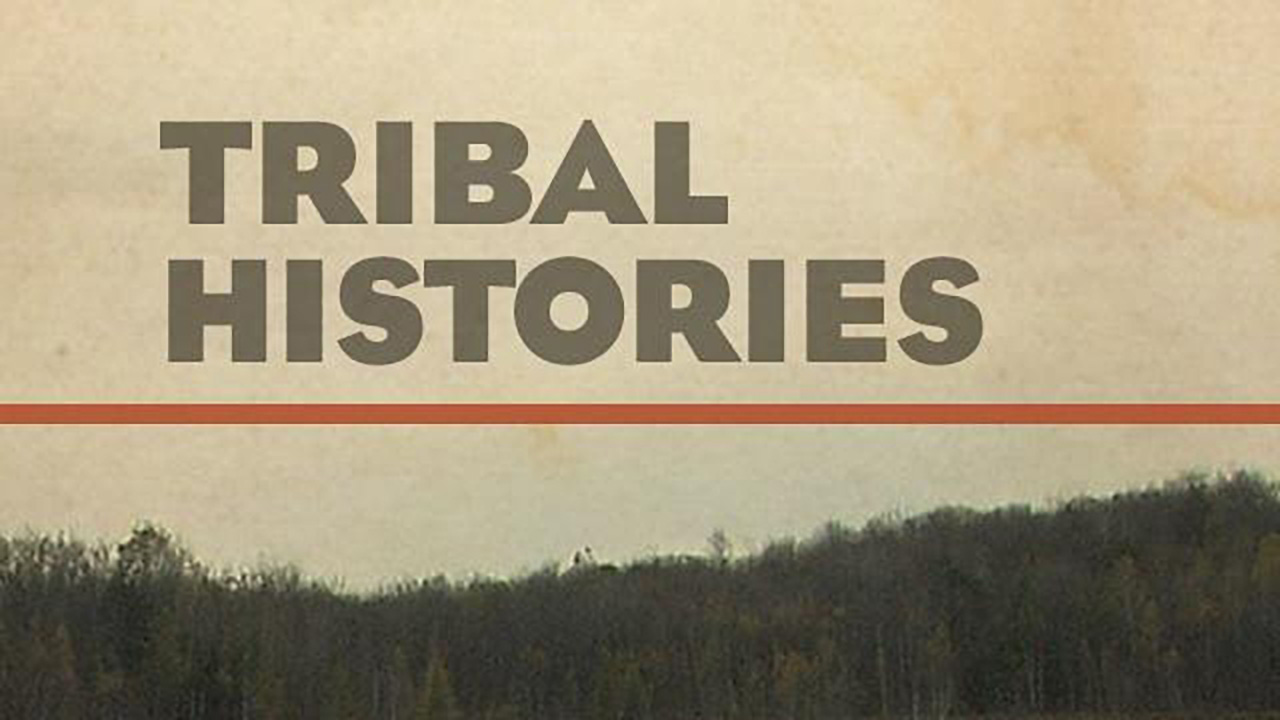





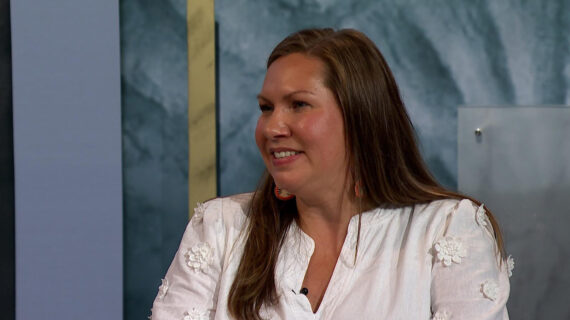


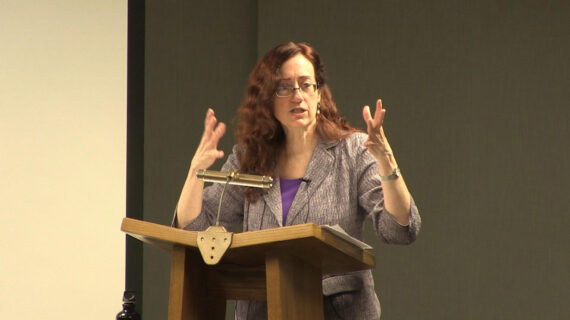
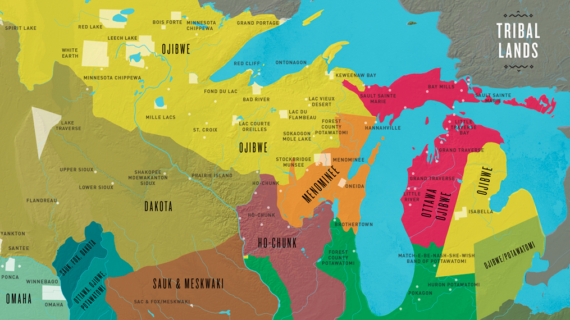
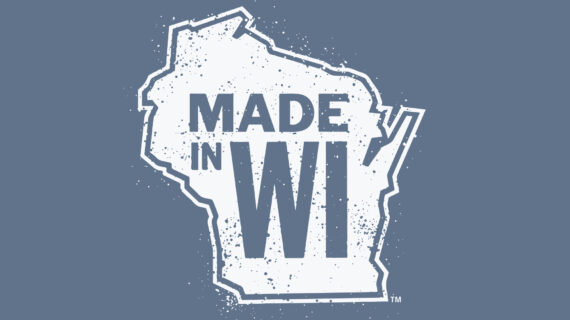

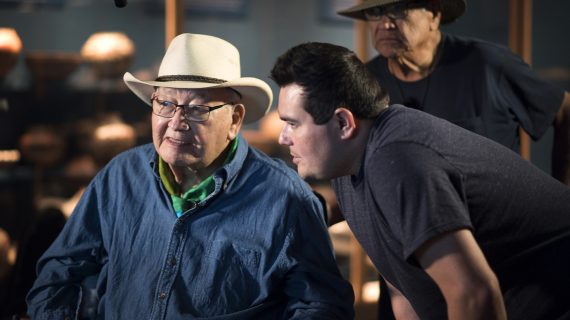


Follow Us